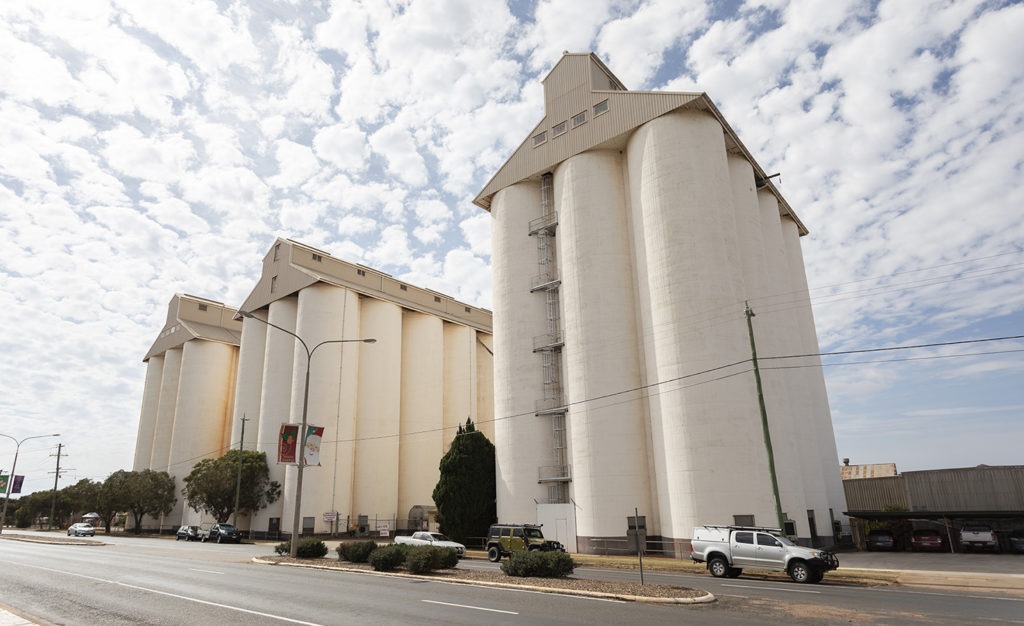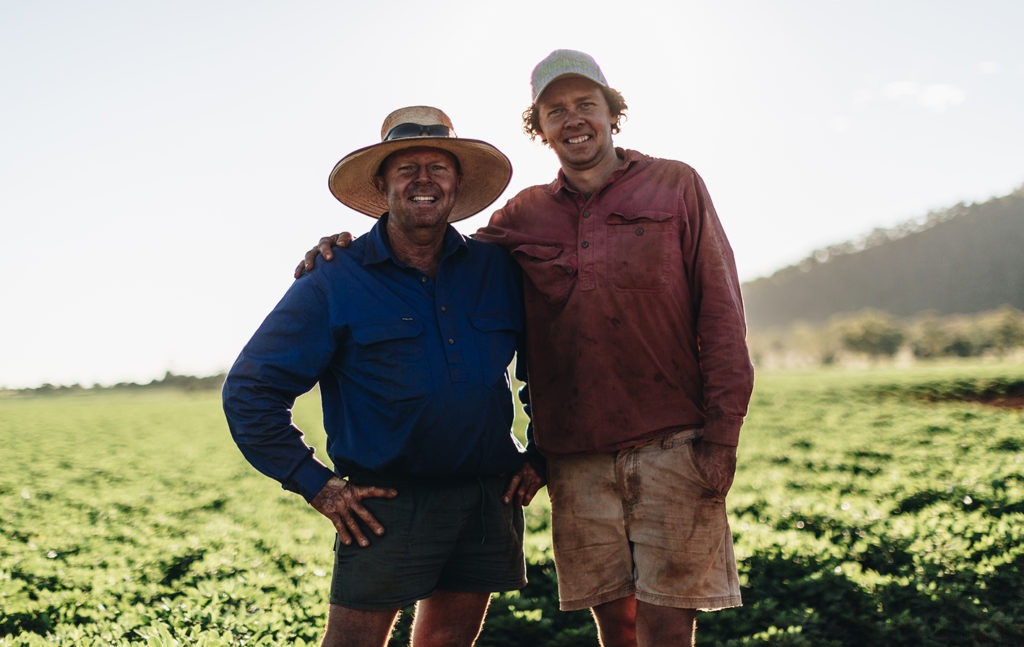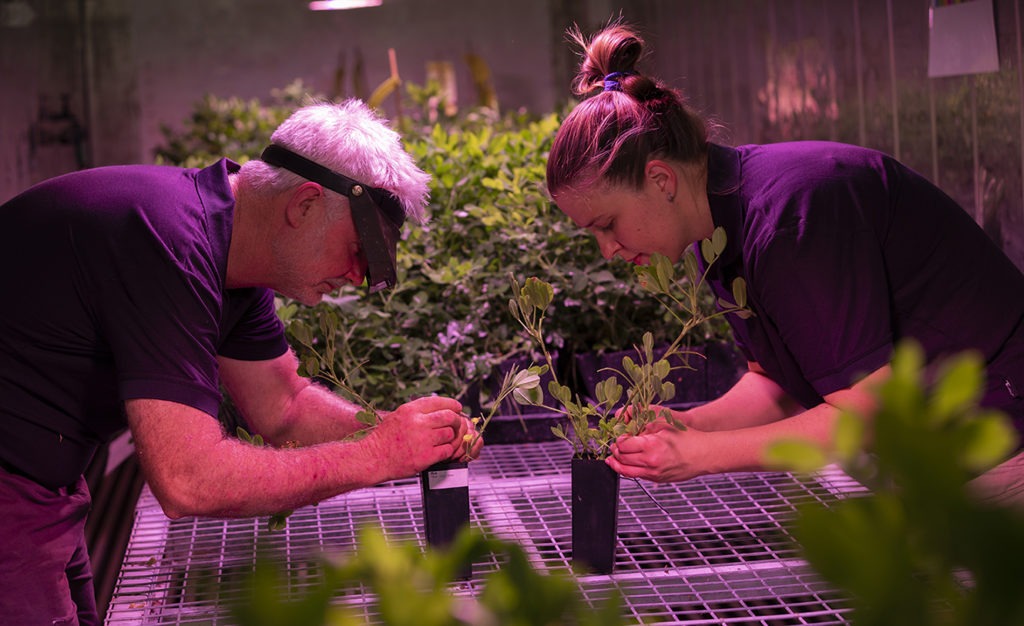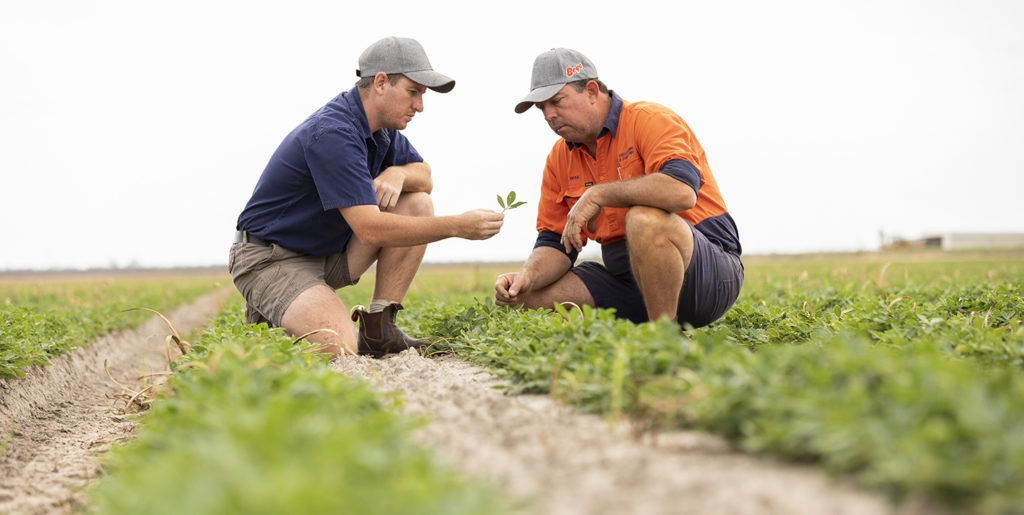Challenges ahead for Aussie peanuts
The town of Kingaroy in Queensland’s South Burnett region, home to one of Australia’s first commercial peanut crops, is facing the possibility of losing its title of the “peanut capital of Australia”. Up until recently, the area produced the majority of Aussie peanuts. However, Kingaroy growers say their production is dwindling due to increasingly unpredictable summer rainfall, which has decreased by seven percent in the Burnett area over the past three decades. Climate scientists predict this trend will continue.
Second-generation Kingaroy peanut grower Peter Howlett recently told ABC News that hot, dry weather and variable rainfall over the summer growing season had delayed his harvest by two months. Meanwhile, south of Kingaroy, peanut farmer Julian Cross hasn’t planted a crop for two years. Peanuts are generally quite drought-tolerant, but they won’t return a good profit if they don’t get adequate water and nutrition. Last year’s conditions were so difficult, Kingaroy growers only produced around 10 percent of their average yield.

Kingaroy is still home to Australia’s largest peanut processing facility. Bega now owns the Peanut Company of Australia; the food giant acquired the peanut processor in 2018. Most South Burnett peanuts are grown under dryland conditions, which means growers rely on seasonal rains. According to Bega Foods Executive General Manager Adam McNamara, South Burnett peanuts will only account for around 20 percent of Australia’s supply this season. A greater supply will instead come from irrigated crops in the Bundaberg region and other Queensland growing areas with greater water availability.

Not all doom and gloom
Despite the challenges being faced by growers, this year’s Queensland peanut harvest is predicted to be the best in five years. Early rainfall last November gave peanut growers the boost they needed, securing a positive start to the 2020/2021 peanut-growing season.
“We’ve had a strong number of growers who hadn’t grown peanuts for the last five years returning to growing,” McNamara says. “Growers across Queensland have been focused on producing the best crop possible. So much hard work has gone into this year’s crop.”
Darrin Rackemann and his son Ben are peanut growers in Coalstoun Lakes in the North Burnett region. Ben’s entry into the family farming business means that the Rackemanns have been growing peanuts for five generations.
“Last year we weren’t able to plant a crop due to the dry conditions,” Ben says. “This season’s harvest is really special. For us, we’d say it’s the best harvest in the last 10 years.”
Tony Russo grows peanuts in Childers near Bundaberg with his son, Mitch. Tony and Mitch have just perfected the last of their peanut crops and have almost completed their harvest.
“Growing the perfect peanut crop takes a lot of hard work and dedication,” Tony says. “Nothing beats the feeling of admiring your peanut crops as they reach their maturity stage. There’s a high level of satisfaction at that moment. There’s also a sense of achievement when your crop is harvested and starts making its way to processing.”

Beyond the capital
Despite this year’s promising harvest, even in a good year, Australian peanut farmers simply don’t have the resources to keep up with domestic demand. In fact, the majority of peanuts consumed in Australia are imported. According to the Grains Research and Development Corporation (GRDC), Australia is one of the few peanut-producing countries, if not the only one, where peanut imports are permitted with minimal tariffs.
Since purchasing the Peanut Company of Australia, Bega has set its sights on growing the Australian peanut industry so that we can become less dependent on imports. The company is working with the GRDC to develop new peanut varieties with improved traits, such as more drought-tolerant peanuts with shorter maturity cycles. This would mean they’re less exposed to the elements and would require less water.
Peanuts are now also being grown in entirely new regions, such as the Red Centre in the Northern Territory. Farmer Paul McLaughlin has been growing peanuts commercially at a watermelon farm in Ali Curung, 400km north of Alice Springs, for the past two years. He says that peanuts are well-suited to the region.
“The middle of Australia is very similar to other climates where they grow peanuts, like Texas and Israel,” he says. “Peanuts like sandy, well-drained soil – we’ve got that.”

The future of Aussie peanuts
There is also an initiative in Northern Queensland to encourage sugarcane growers to include peanuts in their rotating crops. This could bring economic and environmental benefits to growers, as well as boosting Australia’s domestic peanut supply. Growing peanuts as a rotational crop boosts cane yield by up to 20 percent. Peanuts also provide “free” nitrogen in the soil by fixing their own nitrogen. In addition, peanuts reduce nutrient run-off in the catchments where they grow. It’s an important consideration for growers in Great Barrier Reef catchment areas like Burdekin.
“While Australian peanut growers have faced, and continue to face, challenging growing conditions, we’re extremely grateful that this year’s peanut harvest is predicted to be the best in the last five years,” McNamara says. “We’ve had new growers starting to grow peanuts in regions like North Queensland, and we look forward to these numbers continuing to grow as we look towards planting from September onwards.”
Love peanut butter? Love supporting local? Go for Bega’s Simply Nuts PB. It’s made from 100% Aussie peanuts grown in Queensland. Peanuts used in Simply Nuts are high oleic peanuts, which contain more “good” fats compared to regular peanuts.









